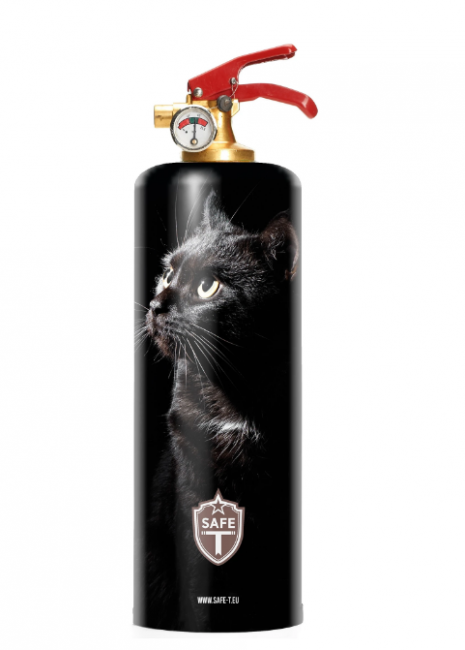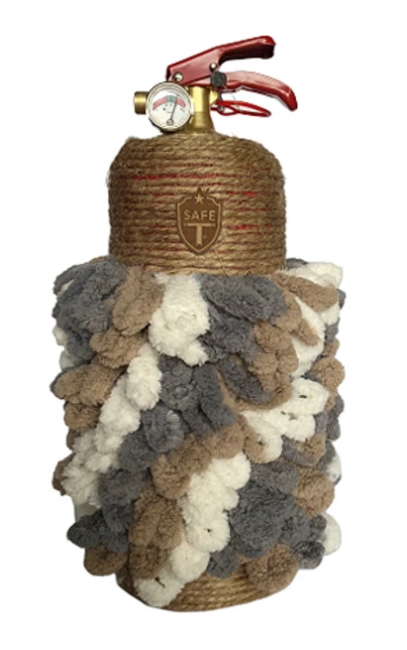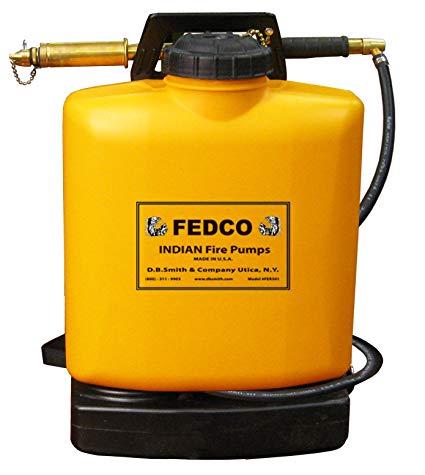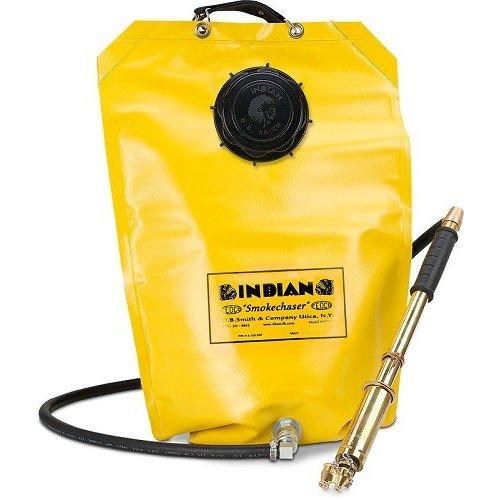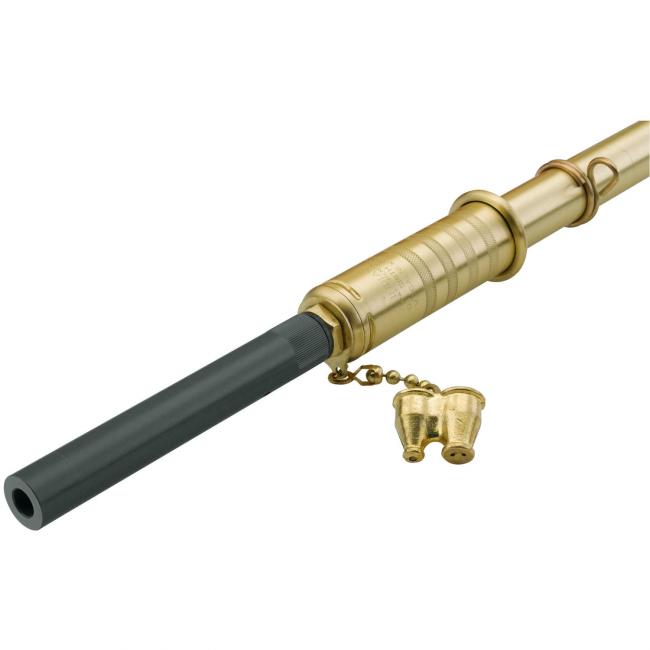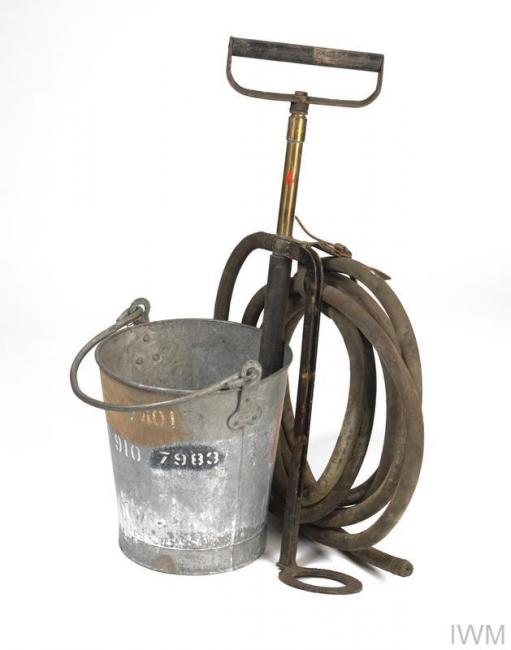Best fire extinguisher for your home and vehicle
The best models to keep around for common home and vehicle fires.
[See the full post at: Best fire extinguisher for your home and vehicle]-
Comments (10)
-
Jane Shapira - February 22, 2021
My question is about fire extinguishers. I have an ordinary one, appropriate for normal household use. But I live in an old wooden house approximately 40 feet away from a big transformer mounted on an ancient wooden electrical pole. And I’m in Seattle, so thinking about earthquake consequences. Question: Is there any fire extinguisher that might be able to handle a downed transformer? Alternatively, should I buy some fire hose and possibly tap into the fire hydrant across the street? I live less than a mile from a fire station, but would rather not count on them being able to get to me quickly after a big earthquake. Maybe I worry too much, but that transformer is big and close. Thanks.
-
Dragoon - May 22, 2021
There isn’t going to be a household fire extinguisher that will be able to put out a transformer fire. They quickly can get out of hand and explode. You also have to worry about getting close enough with down power lines that could still be active.
I also wouldn’t tap into your fire hydrant. They are under high amounts of pressure and you can get injured just trying to open them. Often the hydrant lines are damaged during an earthquake anyways and the water company might turn off the main to that area after an earthquake detection so you might not even have water to use. Even if you did get the fire hydrant open, hooked up a hose, and put out the fire of the transformer, you still have to worry about electrocution. You now have soaked the ground around a downed power line which can lead to death by electrocution.
I would call your utility company and ask for a technician to come out and inspect the pole if you think it is a risk. Demand to know the exact time when the technician comes out so you can talk to them and question their decision if they believe it is safe or not. You are a paying customer, you should have some say in the integrity of your services.
The first thing you should do after an earthquake is evacuate out of the house if it is safe to do so. Access your gas and electric mains outside and turn them off. Most damage from earthquakes are actually caused after the fact by leaking gas lines and damaged electrical lines causing fires.
The best thing you can do if a transformer lands in your yard is to step back and stay clear.
-
-
M. E.Contributor - September 4, 2021
I would love it if you guys could review these wicked-cool “fire balls” that I just saw on Brookstone. One of my concerns is that in an emergency, if you threw it into the fire, it might actually harm the person doing the throwing. But it seems cool to keep it in places prone to fire (attic? I know three people who had attic fires from lightning strikes) and it is basically a passive suppressant.
I am also curious about the “Saf-T” brand of decorative extinguishers. I like the idea of making prepping more mainstream and even fun; these would make great gifts. But I’d never buy one without the “stamp of approval” from The Prepared. Any chance you guys could persuade those two brands to let you do some testing?
-
Gideon ParkerStaff - September 4, 2021
Great suggestions that I will bring up with the team! Many people, my wife included, don’t want to stick a fire extinguisher on the wall because it’s an eyesore or doesn’t match with the rest of the kitchen. Well, when a grease fire burns down your kitchen, then that will be an eye sore.
If one of these decorative extinguishers will force you to place it in an accessible place when you otherwise would have stuck the big red one under the sink, then it’s better than nothing I suppose.
The decorative Death Star ball, or it’s other color and design variants, could be a good solution for young children who know how to toss a ball to daddy, but otherwise wouldn’t be able to operate a more complicated extinguisher. The best advice for children though is to GET OUT of the house. So maybe not the best idea to teach them to run deeper into the house to grab the fire extinguisher ball when there is a fire.
Some initial thoughts I have about them though. If you have guests over and there is a fire started in the corner, are they going to know to throw the Death Star ball at the fire? I think the big red extinguisher is much more identifiable to everyone. And they do make it bright and red for a reason. It will be harder to see the Black Cat decorative extinguisher in a smoke filled room, and again someone might not at first identify that as an extinguisher.
And then… just no… please don’t get this one…. It looks like more of a fire hazard than a fire extinguisher.
For preppers. I don’t think you can go wrong with the tried and true designed classic red extinguisher. Especially if it’s one of the ones from our list that we have done research on.
My personal recommendation is to follow The Prepared’s article and get a quality extinguisher in high risk areas of your home, mount it somewhere easily accessible and visible, and then if you want additional fire protection, you can get one of the decorative options after you have your bases covered with the more reliable options.
-
T Atkins H - May 17, 2022
Speaking of the danger of going to get the extinguisher there is a good practice that will reduce the risk.
The first part of the best practice is to R.A.C.E. against the fire. That acronym means
- Rescue
- Get everyone out before you do anything else.
- Alarm
- Call whatever help is available so they can already be on the way.
- Confine
- Close any interior doors or other barriers to fire spread as you remove people in danger.
- Extinguish,
- Only after you have executed the other 3 steps should you consider attempting extinguishment.
Place the extinguisher as close as you can get it to an exterior exit door of your home. When you go to get it you will then already be at an exit door. If you turn back towards the fire and have an Oh Sh*t reaction you can turn back and use the exit to escape any risk of entrapment.
Firefighters have a risk evaluation mantra that is worth thinking about.
- Risk a lot to save a human life
- Risk a little to save property
- Risk nothing for lives already lost or property already destroyed.
T Atkins H
- Rescue
-
-
Hans - February 20, 2022
Any advice on how to handle fires in a car? Or when to not even attempt? I’m all for being prepared but the little I’ve gleaned makes it seem like there are limited circumstances when it would be safe/worth the risk to attempt to put out a car fire. In other words, probably not too many circumstances where a fire would start in the cabin. And if a fire started in the engine block, it seems like either the car is going to be totalled or unusable in the short-term until repaired. And attempting to put out a fire in the engine block seems to come with a fair amount of risk.
-
Dragoon - February 20, 2022
I’ll respond with what I said on another forum thread talking about where to store your car fire extinguisher.
I’ve seen one car go up in flames before, it was an engine fire of a little VW Jetta. A cop pulled up and used up a whole extinguisher on it and it did nothing. Cars go up fast, and you have to be ready fast.
If you are quick enough to pull over and use it, you may save your car. But you are limited to addressing cabin fires, because opening the hood or trunk could lead to increased airflow into that area and feed the fire even more. There are also many compressed components on a vehicle that can act like a bomb like pressurized struts. So if your car is going to be lost, get away and avoid potential shrapnel.
Have good vehicle insurance and hopefully a minor or major car fire will only cost you a deductible.
-
T Atkins H - May 17, 2022
In 45 years as a fire and medical rescue volunteer it has not been my experience that engine compartment fires cannot be extinguished with a fire extinguisher.
If you take a Community Emergency Response Team (CERT) class you will learn the techniques needed to attempt extinguishment without inordinate risk to yourself.
T Atkins H
-
-
T Atkins H - May 17, 2022
From a prepping standpoint a used Ansul Cartridge operated extinguisher may be the best choice. That is because they can be refilled in the field without any special tools or equipment.
Used cartridge operated fire extinguishers are available for fairly short money. This is because a change to National Fire Protection Association Standard on portable fire extinguishers’ NFPA #10. has made all fire extinguishers that do not have pictograph operating diagrams obsolete. The only purpose of the change to the standard is to force owners of extinguishers which will be inspected by code enforcement authorities to buy new extinguishers.
The only difference between the old and new Ansul Redline Cartridge operated extinguishers is the absence of the pictographs on the older models. No change was made to the extinguisher itself at all. Add on pictograph labels are available for $1 to $3 but are not acceptable to code authorities as an upgrade to standard compliance. As a result of this slight of hand change in the standard there are a lot of “Obsolete” cartridge operated extinguishers available for sale.
Read the refilling steps below and you will see that they are simple enough that any adult can refill the extinguisher.
To refill a cartridge operated extinguisher you only need to;
- Discharge any remaining propellant gas from the extinguisher,
- This is best done with the extinguisher turned upside down to avoid discharging the left over dry chemical extinguishing agent.
- Remove the propellant gas cylinder cover,
- It just snaps on and off because it is held in place by a spring clip,
- Remove the expended propellant gas cylinder from its reverse threaded port,
- Remove the extinguisher fill cap slowly,
- There are slots in the fill cap threads to allow any remaining pressure to escape safely during the removal of the cap,
- Sift the remaining dry chemical into a plastic bucket through a sieve,
- Add enough new dry chemical of exactly the same type to have the required weight of dry chemical shown on the label,
- Place the dry chemical in the extinguisher’s cylinder,
- Replace the fill cap on the extinguisher,
- Pull the charging paddle up to the ready position until it stops,
- Inspect inside the propellant gas cylinder port threads to see that the puncture pin that opens the seal of the propellant gas cylinder was pulled up into it’s ready position by your lifting of the charging lever and is not still down in the threaded area of the port,
- Remove the reverse threaded protective shipping cap from the proper size replacement propellant gas cylinder,
- Screw the replacement propellant gas cylinder into the reverse threaded port,
- Snap the propellant gas cylinder guard into place,
- put the hose and nozzle back in place to prevent accidental charging of the extinguisher with the propellant gas.
The unique suitability of these extinguishers for use by preppers is that by caching a supply of Dry Chemical extinguishing agent, say 2 or more full recharges worth of dry chemical and propellant gas cartridges, they can keep the extinguisher ready for use for a long period of time.
T Atkins H
- Discharge any remaining propellant gas from the extinguisher,
-
T Atkins H - May 17, 2022
One type of fire extinguisher that does not appear on most lists is a backpack type. Those are available in hard tank like the one shown
Or in soft tank which can be rolled up and stored very compactly.
If you shop carefully you can get one for < $100, sometimes for quite a bit less.
Foam nozzles are available for them for ~$12.
By using a foam nozzle and filling the tank with Aqueous Film Forming Foam (AFFF) you can make it effective on ordinary solid combustibles and on combustible and flammable liquids. They are safe to apply to electrified burning materials because the foam will lack the continuity of the stream to conduct electricity. You just have to stay back at least 10 feet. [It is also very dangerous to more closely approach any fire without appropriate protective equipment suitable to the type of fuel which is burning.]
These extinguishers can be refilled from any source of water. Foam additive can be cached to provide for refilling them with AFFF foam.
Another first aid firefighting pump that is worth having is a Stirrup pump.
When place in any container of water it will discharge the stream through a long hose so the nozzle person can concentrate on getting the water on the fire and the container can be refilled with interrupting the pump person and disrupting the continuous flow of water. These can be found both new and used.
T Atkins H
-
- News for the week of 2025-06-2 - 4 days ago
- News for the week of 2025-05-26 - 1 week ago
- News for the week of 2025-05-26 - 1 week ago
- Water filters - 2 weeks ago
- News for the week of 2025-05-19 - 3 weeks ago
This forum is heavily moderated to keep things valuable to as many people as possible. Full community policies are here. The basics:
- 1. Be nice to each other.
- 2. Stay focused on prepping.
- 3. Avoid politics, religion, and other arguments.
- 4. No unfounded conspiracies, fake news, etc.
- 5. Debate ideas, not people.
